Where the Mind is without Fear
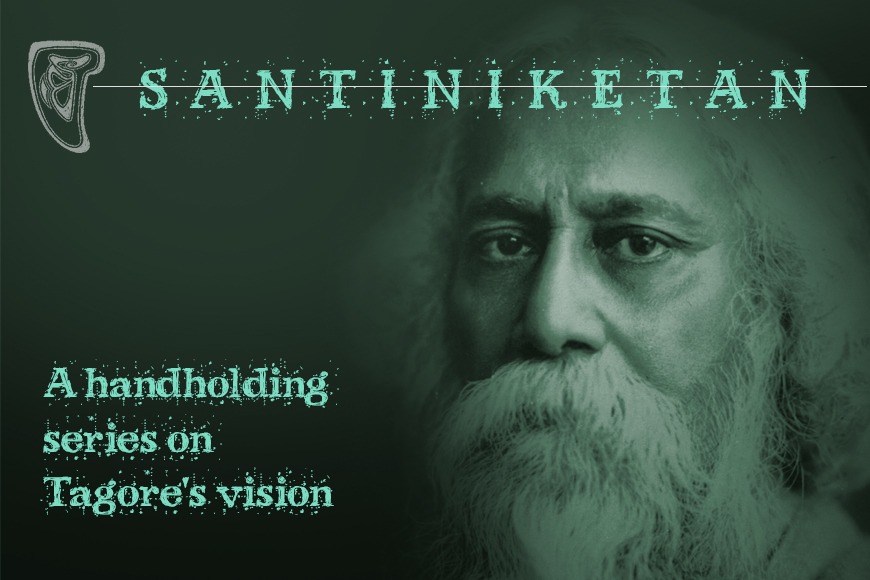
Where the world makes its home in a single nest…
That’s what best describes Rabindranath Tagore’s Santiniketan and Visva Bharati. The University is not just another temple of learning, rather it is Tagore’s world vision that gets reflected, and not his own name. It is not like Jawaharlal Nehru University or Lady Shriram College, or even Lady Brabourne College, but the very name ‘Visva Bharati’ reflects a global confluence of thoughts and ideologies. It is believed Tagore named it Visva Bharati purposely, there were deep reasons attached to the name.
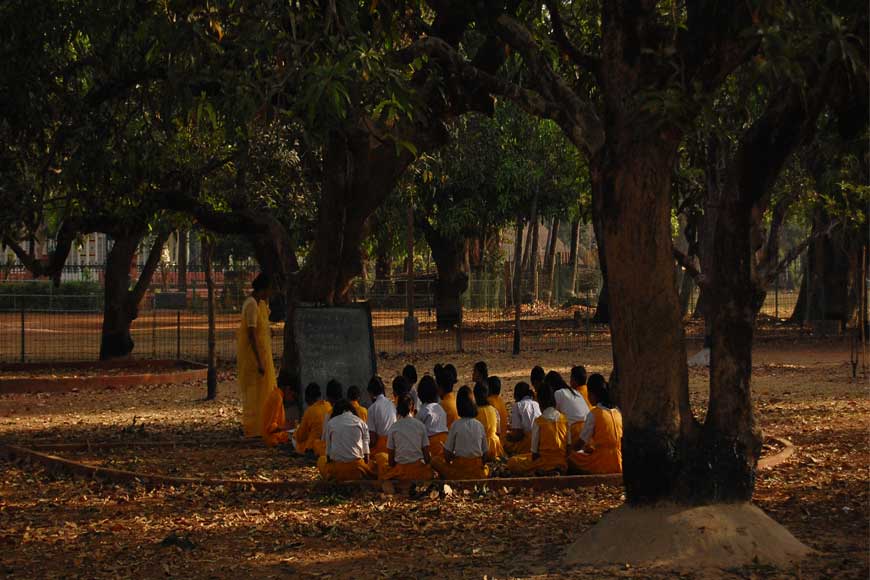
Each department of Visva Bharati was curated by Tagore himself, reflecting his emancipated mind, his far-sighted concepts and his creative thoughts. Tagore established an Ashram Vidyalaya in Santiniketan in 1901 primarily to move away from the hustle and bustle of capital of British India, Calcutta and its colonial influence. Secondly, Tagore was a nature lover and the seasonal variations of Santiniketan with its green treasure had an abiding appeal to the poet’s heart, who always wished to break free from the caged life and enjoy the freedom of spirit and body. He had already envisioned by then a school with a new concept, where children will learn in the middle of nature, can climb and swing from the trees around, would be carefree and make Nature their best teacher. No wonder, setting up of Patha Bhavan, was a direct result of such dreams where in nature would introduce children to science and technology, to photosynthesis, basic entomology, music and dance spontaneously.
Tagore established an Ashram Vidyalaya in Santiniketan in 1901 primarily to move away from the hustle and bustle of capital of British India, Calcutta and its colonial influence. Secondly, Tagore was a nature lover and the seasonal variations of Santiniketan with its green treasure had an abiding appeal to the poet’s heart, who always wished to break free from the caged life and enjoy the freedom of spirit and body.
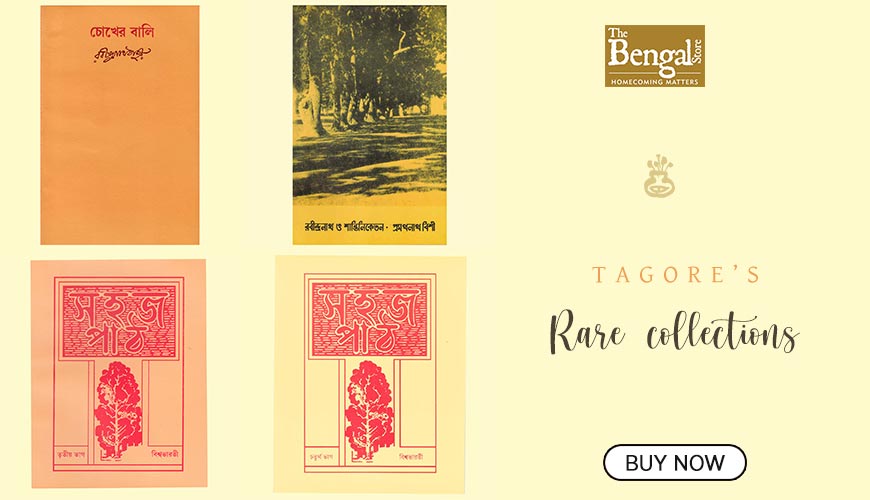 Even the Bauls of Santiniketan had a direct impact on the poet’s mind. Their philosophy aligned to Sufism attracted Tagore. It is from these motivating factors, emerged today’s Ananda and Santosh Pathshalas as well as Patha Bhavan and Siksha Satra. Ananda Pathshala is a pre-school before Patha Bhavan and Santosh Pathshala is pre- school to Siksha Satra. Both are a few kilometres away in Sriniketan.
Even the Bauls of Santiniketan had a direct impact on the poet’s mind. Their philosophy aligned to Sufism attracted Tagore. It is from these motivating factors, emerged today’s Ananda and Santosh Pathshalas as well as Patha Bhavan and Siksha Satra. Ananda Pathshala is a pre-school before Patha Bhavan and Santosh Pathshala is pre- school to Siksha Satra. Both are a few kilometres away in Sriniketan.
What Tagore thought a century ago is the same education system that is being pushed globally today. Viewing education as the right platform for bonding basic education with research under the unitary umbrella of the same university. From basic learning to higher education under same roof was definitely Tagore’s path-breaking vision and unique concept that even the Western world didn’t dare to think in those days.
In 1919, Tagore started two schools of music and fine arts. For him they were a medium of life, that needs to be practiced, for him it was a combination of philosophy, spirituality, history, geography, science and environment. Imagine unifying Kala Bhavan in Santiniketan with Shilpo Sadan in Sriniketan – these two together can nucleate a modern institute of design that has no parallel in any modern Indian universities. Similarly, Tagore’s songs and dance forms were a result of assimilation of various forms from Hindustani classical to Western music. Amalgamation of dance forms like Manipuri, Kathakali and Candy styles was like a chemical reaction wherein the reactive agents lose their identity giving rise to a whole new compound.
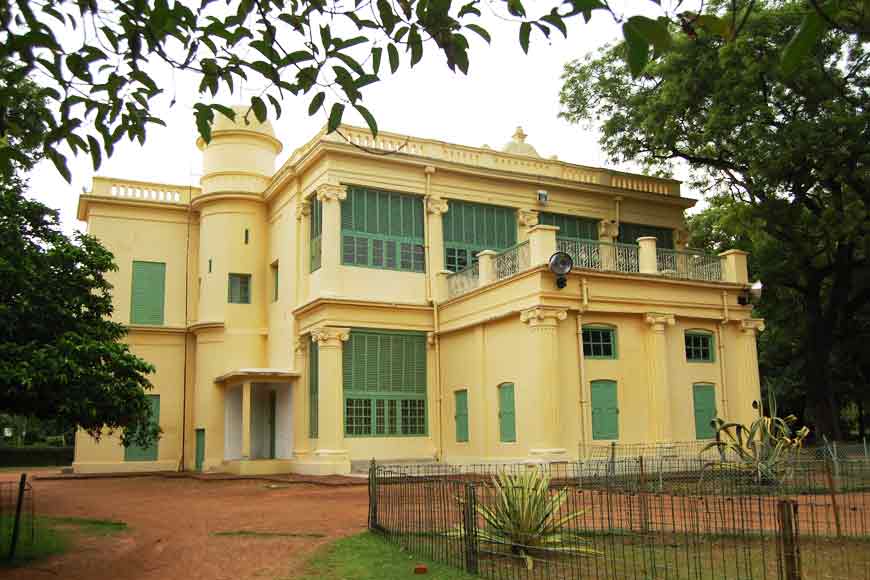
Visva Bharati was a seat of various experiments. One being agriculture and community teaching. Tagore believed in the idea of Rural Reconstruction and introduced festivals like Brikkha Ropon, Halakarshan and Basanta Utsav, providing a backdrop for environment conservation, something that has turned into the need of the hour for the modern world. He blended science with agriculture, from Botany to Biotechnology to give a boost to rural economy. Finally, Tagore’s deep moorings into Upanishads and Vedanta philosophy blended with Buddhism and Visva Bharati saw the birth of Cheena Bhavan, of Japanese studies at Nippon Bhavan and so on. They all speak of harmony, something badly missing in world politics today.
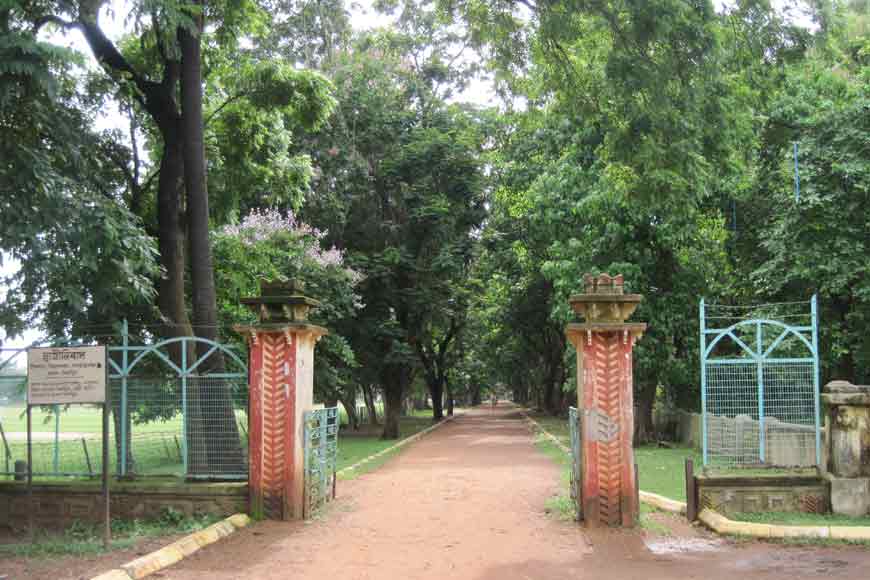
Visva Bharati thus came up brick by brick with a multi-dimensional ideology, that of a farsighted, sensitive and creative genius. Even if we have deviated substantially today from his ideology creating partitions, Visva Bharati still represents those famous lines of Gitanjali that we often chant:
Where the mind is without fear and the head is held high
Where knowledge is free
Where the world has not been broken up into fragments by narrow domestic walls…..
(Inspired by A random walk in Santiniketan Ashram by Sushanta Dattagupta, and other related publications on Santiniketan)










